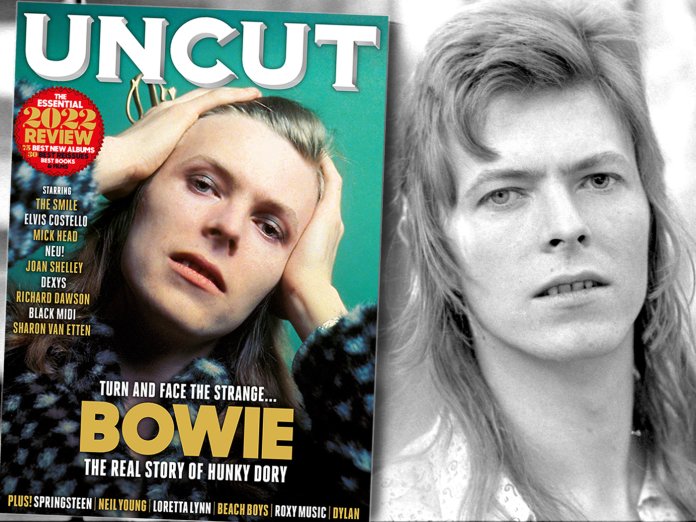In 1971, DAVID BOWIE was all about ch-changes. Inspired by the America of Andy Warhol and Lou Reed, Bob Dylan and After The Gold Rush, he delivered a daring, career-reviving triumph with his first truly great album. As a new boxset, Divine Symmetry, digs deep into the 12 months that led up to the r...
In 1971, DAVID BOWIE was all about ch-changes. Inspired by the America of
Andy Warhol and Lou Reed, Bob Dylan and After The Gold Rush, he delivered a daring, career-reviving triumph with his first truly great album. As a new boxset, Divine Symmetry, digs deep into the 12 months that led up to the release of Hunky Dory, collaborators and confidants reveal the secrets of this major turning point in Bowie’s evolution. “With David, it was onward and upward all the time,” learns Peter Watts. Look out, you rock’n’rollers, in the latest issue of Uncut magazine – in UK shops from Thursday, November 10 and available to buy from our online store.
Walk 10 minutes uphill from Beckenham Junction station, past the squat new developments and elegant townhouses, and you’ll eventually arrive at the corner of Southend Road and Shannon Way. Today, it’s a block of square brick apartments, similar to many buildings in this corner of south-east London. But before it was demolished in the early ’80s, this was the site of Haddon Hall, where David Bowie lived with his wife Angie and an assortment of musicians from 1969 until 1972. A sprawling Victorian villa, Haddon Hall was effectively the cradle for Bowie’s fast-moving transition from folkie to futuristic superstar.
When 80-year-old south Londoner Terry moved into his flat three years ago, he had no notion of the building’s musical heritage. He’s since done his research, prompted by the gaggles of tourists who make pilgrimages here and pose for photographs in the street outside his home. “Oh yes, it was all a bit of a to-do,” says Terry. “All those parties. They reckon The Beatles and the Stones came to visit. Imagine that.”
We agree that it’s impossible to imagine The Beatles, the Stones or even David Bowie ever coming to this unglamorous suburban spot. Yet Terry – who admits he’s not really a Bowie fan (he prefers the Stones) – mentions a video his daughter sent him. “It shows Boy George taking the 54 from Eltham to Beckenham and staring up at my flat,” smiles Terry. “Now Boy George, he definitely would have been a fan of Bowie.”
Boy George was indeed a visitor to Haddon Hall in 1971, one of several south London music fans who’d come to stare at the local freak – and got told to “fuck off” by his new wife, Angie.
“Haddon House was inspiring,” says Mick “Woody” Woodmansey, Bowie’s drummer, who shared the house with a roving cast of characters that included the Bowies, Tony Visconti and Mick Ronson. “It was part commune, part flatshare. We didn’t get the Beatles and Stones, it was more like Marc Bolan or Roy Harper. They’d say, ‘Roy’s doing a concert tonight in Tony’s bedroom,’ and in you’d go. There was a wine cellar underneath that we used as a place to rehearse, so you could write and play whenever you wanted. David had a piano and the 12-string was usually in the lounge. He’d say, ‘Woody, I’ve finished one,’ and you’d go and have a listen.”
Bowie was entering a period of extraordinary productivity that saw him record Hunky Dory, his first great album, and write much of its life-changing successor, The Rise And Fall Of Ziggy Stardust And The Spiders From Mars at Haddon Hall. But it was also a time of uncertainty and anxiety. As Bowie struggled to escape the orbit of his sole 1969 hit, “Space Oddity”, he pursued an alternative career as a producer/songwriter for hire, writing songs for friends and other singers. This journey is charted in Divine Symmetry, a new boxset that examines in detail how Hunky Dory came together and why it was such a turning point in his career. There are home recordings from Haddon Hall and American hotel rooms, BBC sessions, previously unheard originals, demos and a pivotal live performance that heralded the direction Bowie would take.
PICK UP THE NEW ISSUE OF UNCUT TO READ THE FULL STORY



